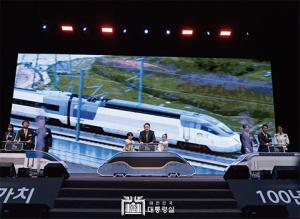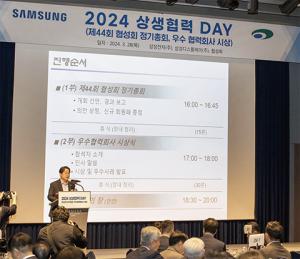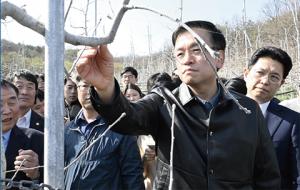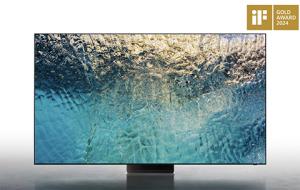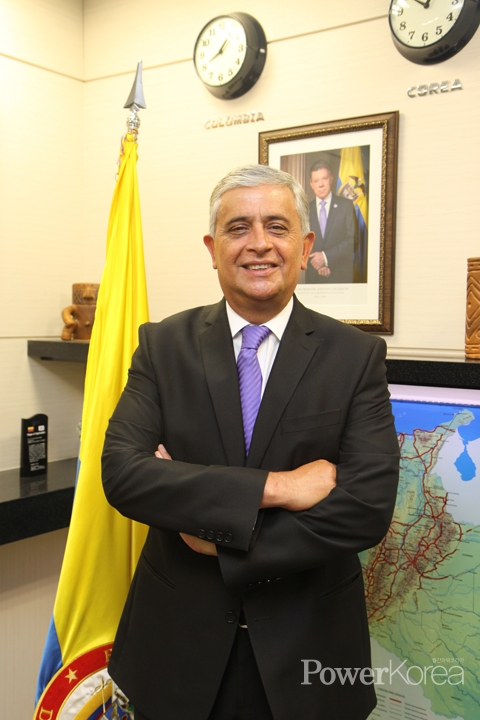 |
||
| ▲ 띠또 사울 삐니야, 주한 콜롬비아 대사 | ||
6.25전쟁 당시 참전 16개국 중 하나로 남한에 군대를 파견한 콜롬비아는 1962년 3월 10일 한국과 국교를 수립하였다. 이후 1976년에는 문화협정, 1981년에는 경제협력 및 과학기술협력 협정과 사면협정, 1986년에 무역협정을 체결하였다. FTA는 2016년 7월에 발효되었다. 우리나라의 대 콜롬비아 수출액은 2015년 기준 15억 1000만 달러로 주 종목은 자동차 및 부품, 합성수지, 타이어, 선박 등이고, 수입액은 6억 1000만 달러로 주 종목은 원유, 합금철, 커피, 동제품, 고철 등이다. <파워코리아>는 한-콜롬비아 수교55주년과 FTA 1주년을 기념할 국경일 행사 준비로 바쁜 나날을 보내고 있는 띠또 사울 삐니야 주한 콜롬비아 대사를 만나 보았다.
한국에는 언제 부임하셨고, 한국에 대한 인상은 어떠신지요?
한국에는 2014년 4월에 부임했습니다. 한국 도착 후 지금까지 한국의 경제, 사회적 발전을 지켜 보며 강한 인상을 받았습니다. 예상컨대, 한국은 머지않아 고부가가치 산업인 자동차, 휴대폰, 가전, 전자 그리고 서비스 분야에서 세계적인 리더쉽을 발휘할 것 같습니다. 이러한 눈부신 성과는 정책결정력 그리고 높은 교육열에서 왔다고 보여지며 이는 곧 한국을 고도록 숙련된 노동력을 가진 국가로 성장시킨 동력이 아닌가 합니다. 또한, 한국은 언어, 음식, 음악 그리고 많은 부분에 있어 문화적 뿌리가 튼튼한 나라이며 이들 문화는 독창적이고 또 쉽게 알아볼 수 있는 것 같습니다.
대사로 부임하시기 전에는 주로 어떤 일을 하셨는지요?
군인으로서의 경력을 말씀 드려야 할 것 같은데, 초기에 저는 전술/작전 부서에서 일을 했습니다. 그 후 20년간 전투기 조종사로서 마약밀매근절과 반-테러리즘에 관련된 임무를 수행 했습니다. 2005년에 준장으로 승진했고, 1년 뒤에는 군합동본부의 일원으로 특별작전본부 지휘관으로 일했습니다. 이후 국방부장관의 고문을 거쳐 2011에서 2013년에는 공군사령관으로 근무했습니다. 대사로서는 2014년 한국에 처음으로 부임했고, 현재 비거주 대사로 주필리핀 콜롬비아 대사 그리고 주몽고 콜롬비아 대사를 겸임하고 있습니다.
콜롬비아 하면 사람들에게 어떤 것이 떠 오를까요?
먼저, 콜롬비아와 한국의 인연은 한국전쟁으로 거슬러 올라갑니다. 콜롬비아는 5,100 명의 군인을 남한으로 파견했고 그 중 213명이 전사하고 448명이 부상을 입었습니다. 사실 콜롬비아는 한국전에 참전한 (남한 쪽) 유일한 남아메리카 국가 이기도 합니다. 그건 그렇고, 콜롬비아 하면 커피, 아름다움, 축구 등이 자주 거론되는 단어들이 아닌가 합니다. 콜롬비아의 아라비아 커피는 한국인들에게도 이미 유명하죠. 또 축구를 좋아하는 분들이라면 제임스 로드리게스는 친숙한 이름일수 있고, 음악을 좋아하시는 분이시라면 세계적인 팝 가수 샤키라도 유명합니다. 무엇보다도 한국에서 스테디셀러로 유명한 가브리엘 가르시아 마르케스의 걸작 ‘백년의 고독’ 이 많은 사랑을 받고 있지 않나 하는 생각이 듭니다.
콜롬비아와 한국간의 주요 협력 분야는 무엇입니까?
경제부분에 있어서는, 2016년 7월에 발효된 FTA로 인해, 양국은 각국의 사업가, 생산자, 농민 그리고 정부단체 등에 대한 지원을 통해 물품, 서비스, 세관, 무역 간소화, 투자, 조달, 지속적 성장 등 FTA 가 제공하는 편리함을 최대한 이용할 수 있도록 돕고 있습니다. 협력분야에 있어서는, 현재 양국의 논의 하에 진행되고 있는 ‘전략적 파트너쉽 프로그램’ 이 있고 또한 ‘콜롬비아 발전 계획’하에 선택적으로 진행중인 협력 분야가 있습니다. 이 프로그램은 콜롬비아의 발전 비전인 농어촌/도시 발전, 교통기반시설개선사업, 산업경쟁력강화, 생산성향상 그리고 분쟁 이후 안정화 사업에 중점을 두고 있습니다.
현재 양국에서 활동중인 한국/콜롬비아 회사가 있다면 소개 부탁드립니다.
LG CNS가 IT 분야에 두각을 보이고 있고, 한국개발은행이 커넥션 노스 하이웨이 프로젝트에 투자 중입니다. 또한 현대 건설이 물컨소시엄Aguas de Aburrá와 관련하여 메델린 강 정수처리장을 건설 중에 있고, 한국의 대기업들인 삼성, 현대차, 기아차, 포스코, SK 그리고 넥센 등도 각 분야에서 두각을 나타내고 있습니다. 한국에서 활동중인 콜롬비아 회사는 현재 4개인데 모두 영농산업과 관련이 있습니다. 먼저 란스 코리아 (Rans Korea) 가 5년 전부터 한국에 수국화를 수입/공급하고 있으며, 올해부터는 피타야 (타원형의 열매가 열리는 선인장의 하나)도 수입/공급하고 있는데 한국인들로부터 많은 인기를 끌고 있습니다. 그 외 커피수입 업체인 카페 노갈레스 (Café Nogales) 그리고 아마티보 코리아 (Amativo Korea) 가 각각 부산, 서울에 사무소를 운영 중이고, 유기농 야자유, 바나나, 커피 등을 취급하는 다본 올가닉 (Daabon Organic) 또한 올해에 한국시장에 진출했습니다. 2016년을 기준으로, 콜롬비아는 브라질 다음으로 두 번째로 큰 대한국 커피 수출국이며, 랭킹 3위안에 드는 인스턴트 커피/커피 에센스 수출국이기도 합니다. 특히 콜카페 (Colcafe) 그리고 데스카페콜 (Descafecol) 등의 회사는 한국에 고 퀄러티 제품을 공급하고 있습니다.
콜롬비아 문화를 한국에 알리기 위해 대사관에서는 어떤 행사 또는 프로그램을 진행하고 있는지요?
주한 콜롬비아 대사관 에서는 콜롬비아의 문화를 알리기 위해 지속적인 행사를 기획하고 있습니다. 최근에 레오 마티즈 (Leo Matiz) 의 사진전을 포항과 제주도에서 성공적으로 개최했는데, 한국전에 참전한 콜롬비아 군인들의 사진도 포함되어 의미를 더했습니다. 또한, 현재 대사관 에서는 콜롬비아에서 스페인어를 배울 수 있는 기회를 주고자 한국 대학생 또는 여행 가이드 분들을 모집 중에 있습니다. 모든 비용은 콜롬비아 정부에서 지불됩니다. 한국을 비롯한 동아시아 라틴아메리카 협력포럼 (FEALAC) 에 가입된 아시아국가의 60명의 대학생 또는 여행가이드 분들을 선정하는 이 장학금 프로그램은 현재 5회째를 맞이하고 있으며 특히 한국에서 아주 뜨거운 관심을 보이고 있어 아주 기쁘게 생각합니다. 한가지 더 언급하자면, 주한 콜롬비아 대사관에서는 곧 ‘콜롬비아 국경일’ 행사를 7월 마지막 주에 개최할 예정입니다. 가장 큰 문화행사로서 많은 재능 있는 콜롬비아인들을 초청해 전통 공연을 선보일 예정입니다. 물론, 맛있는 콜롬비아 음식도 빼놓을 수 없겠죠.
콜롬비아를 방문하는 한국인들에게 어떤 곳을 소개해 주시고 싶으신지요?
지정학적 위치로 인해, 콜롬비아는 여러 종류의 기후와 풍경을 만끽할 수 있는 나라입니다. 저는 크게 콜롬비아의 수도인 ‘보고타’, 스페인 동남부의 항구 도시 ‘카르타헤나’, ‘콜롬비아 커피문화 경관’ 그리고 콜롬비아 남부 도시 ‘칼리’ 를 방문해 보시길 권합니다. 보고타는 콜롬비아 정치/경제의 중심지이자 다문화 그리고 식민시대와 현대의 건축물이 어우러져 있는 도시이기도 합니다. 카르타헤나는 세계문화유산에 등록된 성곽도시로서 아름다운 해변, 맛있는 음식 그리고 각종 국제 문화 축제가 열리는 곳이기도 하죠. 콜롬비아 커피문화 경관은 말 그대로 커피농장지대이고 커피 놀이공원도 마련되어 있어 커피를 좋아하시는 분들께 강력히 추천해 드립니다. 마지막으로 살사 음악과 춤에 관심 있으신 분이라면 단연 칼리가 최고입니다. 물론 천연기념물, 박물관 그리고 사탕수수농장도 있어 입맛에 따라 코스를 선택할 수도 있습니다.
앞으로의 계획과 <파워코리아> 독자 그리고 한국에 거주중인 콜롬비아인들 에게 한 말씀 부탁 드리겠습니다.
먼저 외무장관인 마리아 안젤라 올긴 이 9월 1일 부산에서 열리는 제8차 동아시아 라틴아메리카 협력포럼에 참석차 방문하게 됩니다. 이 방문은 양국의 정치협력은 물론 무역과 경제부분 협력을 강화시키는 계기가 될 것이라 생각합니다. 또한 박근혜 전 대통령의 2015년 콜롬비아 방문에 대한 답례로 후안 마누엘 산토스 콜롬비아 대통령의 한국방문도 이루어질 가능성이 있어 기대가 됩니다. 위에서 언급한 콜롬비아 국경일행사도 7월 26일에 열릴 예정인데, 올해는 콜롬비아-한국 FTA 1주년 그리고 콜롬비아-한국 수교 55주년을 기념하는데 포커스가 맞추어질 것입니다. 각계각층의 내빈은 물론 한국에 거주중인 콜롬비아인들과 함께 콜롬비아 역사, 문화, 음식을 아우르는 다채로운 교류의 장이 될 것이라 생각합니다. 또한, 국경일행사 다음달인 8월에는 콜롬비아 수출&투자 진흥원인 ‘프로콜롬비아(Procolombia)’가 이끄는 사업가들과 수출업자들이 한국을 방문할 예정입니다.
[Special Interview] H.E. Tito Saul Pinilla, Columbian Ambassador
Fought on the South side among the 16 combatant nations at the Korean War, the Republic of Colombia tied diplomatic relations with S. Korea on 10 March 1962. The two countries steadily raised the level of cooperation to Cultural Agreement in 1976, Economic & Science and Technology Agreement and Visa Exemption Agreement in 1981 and Trade Agreement in 1986, culminating the FTA in July 2016. Korea’s export to Colombia reached to USD 1.51 billion as of 2015 in cars and car parts, synthetic resins, tires and ships and the import from Colombia to USD 610 million in crude oil, alloy, coffee, copper and scrap iron. <Power Korea> met the Columbian Ambassador H.E. Tito Saul Pinilla who is busy preparing the National Day of Colombia that will mark the 55 years of diplomatic ties and the one year anniversary of the FTA with Korea.
When did you start your office in Seoul and what is your impression of Korea?
I began my term in Seoul from April 2014. Regarding my impression of Korea, I have to say that I am impressed by the economic and social success of the country. In a few years I think the country will have become one of the world’s leading exporters in value added products such as cars, cellphones, home appliances, electronics and services. I assume that these remarkable achievements have been the outcome of many policy decisions and educational strengths that led the country to a highly skilled labor powerhouse. Also, Korea has strong cultural roots in language, food, music and many others that are unique and easily recognizable.
Could you shortly tell us about your previous posts?
At the beginning of my military career I worked in a tactical and operational level position. I participated in the fight against drug trafficking and terrorism for over 20 years as a fighter pilot. In 2005 I was promoted to the rank of Brigadier General. One year later I worked in the Joint Command of the Military Forces of Colombia participating in the organization as Commander of the Special Operations Command. I was an Advisor of the Minister of National Defense and later I was Commander of the Colombian Air Force promoted to General (2011-2013). Since April 2014 I am the Ambassador of Colombia to Korea, Non-resident Ambassador of Colombia to the Philippines and to Mongolia.
What do you think are the images that might pop into people’s minds when they hear Colombia?
The bond between Colombia and S. Korea goes back to the Korean War. Colombia supported the South during the Korean War (1950-1953) by sending 5,100 troops of whom 213 were killed and 448 were wounded. Although many are not aware, Colombia was actually the only Latin American country to help South Koreans during the war. Apart from that, coffee, beauty, and football are some keywords that are often mentioned about Colombia. Many praise our Arabica coffee, a staple in an average Korean’s daily life. Koreans invest a great amount of time and interest in football so naturally, players like James Rodriguez are on the spotlight and Shakira is also a globally recognized singer. “100 Years of Solitude” is a steady seller here from my understanding, which although not everyone may realize, is a masterpiece by the Colombian writer Gabriel Garcia Marquez.
What are the key areas of diplomatic and economic cooperation between Colombia and S. Korea?
In economic matters, the Korea-Colombia FTA has been in force since July 2016. We are in the process to promote and stimulate entrepreneurs, producers, farmers and government organizations of each country so that they can make the most of the FTA benefits in goods, services, customs procedures, trade facilitation, investment, government procurement, sustainable development and many others. In terms of cooperation, there is a strategic partnership program built on bilateral discussions as well as the cooperation areas selected by Colombia’s National Development Plan and Colombia’s development needs. This Program aims at making contributions to Colombia’s national development vision focused on rural and urban development, transport infrastructure improvement, enhancement of industrial competitiveness and productivity, and post conflict projects.
Could you introduce some of the Korean and Colombian companies currently active in each country?
There are some examples of Korean presence in Colombia: LG CNS in IT, Korean Development Bank’s investment in the Connection North Highway project, and Hyundai E&C currently building the water treatment plant for the Medellin River associated with the Consorcio Aguas de Aburrá. Other notable Korean companies operating in Colombia are mostly the large names such as Samsung, Hyundai, Kia, POSCO, SK and Nexen. It is important also to mention the Colombian companies in Korea. At the moment we have four Colombian companies that opened offices in Korea and they are basically located in the agro industrial sector. More than 5 years ago Rans Korea opened its office as a subsidiary of Rans in Colombia and since then it has been supplying high quality hydrangeas. A major milestone for this company came in 2017 as they started the imports of Colombian yellow pitaya, which is a fruit that has been very well accepted by Korean consumers. In the second place, we have two green coffee distributors, Café Nogales and Amativo Korea, one located in Busan and the other in Seoul respectively but both bringing the best Colombian specialty coffees. The fourth company is Daabon Organic that started operations this year and is selling organic palm oil, organic bananas and organic coffee in the Korean market. In 2016, Colombia was the second biggest exporter of coffee beans to Korea after Brazil and we are in the top three exporters of instant coffee extracts and essences to Korea. Companies such as Colcafe and Descafecol are supplying Korean companies with high value products.
Cultural and people-to-people exchanges are very important in building a close bilateral relationship. What cultural events and programs are you running at the moment?
The embassy constantly holds events to raise awareness of our country. Recently, we have successfully exhibited photographs of the master Leo Matiz in Pohang and Jeju. We even included pictures of the Colombian soldiers in the Korean War. Also, we are in the middle of selecting candidates to a scholarship program completely funded by the Colombian government in which Korean university students and tour guides are sent to Colombia to learn Spanish. A total of 60 candidates from the FEALAC (or FOCALAE in Spanish) member countries in East Asia are to be selected. It is the fifth this time and we are extremely content with a huge interest Korea has shown in this program. We have another exciting event coming up, probably the biggest one yet – the National Day of Colombia – which will probably take place on the last week of July. It is the most anticipated cultural event of the year as we always invite the most talented Colombians to promote our culture. It is basically a party with delicious food, plenty of attractions, and greatly anticipated traditional performances. More detail is yet to come!
What do you think we can see, eat and enjoy when we visit Colombia?
Thanks to the geographical position of Colombia, the country counts with different climatic zones that create unique landscapes and destinations. The tourist destinations we promote here in Korea are Bogota, Cartagena, Coffee Cultural Landscape and Cali. Bogota is the capital of Colombia, and is the economic and political center of the country, but it is also a diverse and multicultural city that blends modern and colonial architecture. Cartagena is a World Heritage walled city where people can enjoy beautiful beaches, delicious food, and experience international cultural festivals. The Coffee Cultural Landscape is a region that illustrates natural, economic and cultural features of a society that is strongly connected to coffee plantations; there is even a Coffee amusement park. Cali is the center of the Salsa music and dance, this destination offers the possibility to walk under the shade of trees along the riverbank, admire national monuments and museums, enjoy music festivals and learn about sugarcane farming.
Lastly, what is your future plan and is there anything you would like to say to <Power Korea> readers and Colombians living in Korea?
We expect the visit of Ms. Maria Angela Holguin, Minister of Foreign Affairs of Colombia who will attend the FEALAC 8th Foreign Ministers' Meeting (FMM) that will take place on September 1, 2017 in Busan, Korea. This visit will be the opportunity to strengthen our bilateral agenda that comprise not only political and cooperation issues but also trade and economic activities. Later it may be possible to have the visit of President Juan Manuel Santos who will return the previous visit of President Park to Colombia in 2015. In addition, a group of Colombian entrepreneurs and exporters led by Procolombia, the Export and Investment Promotion Agency, will pay a visit to Korea in August this year. One last thing as mentioned earlier, the National Day of Colombia on July 26th will be an opportunity to share part of our culture, history and the highest quality of music, food of our country not only with the Colombian community living in Korea but also with the Korean authorities and Embassies in Seoul. This year the central theme is the celebration of one year anniversary of the FTA and 55 years of diplomatic relations between the two countries.
김종관 기자 powerkorea_j@naver.com

